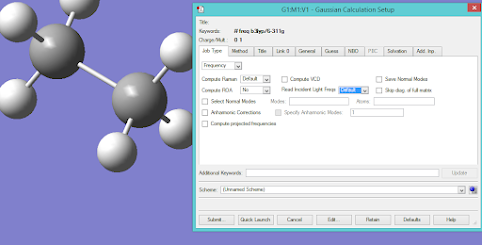"Unlocking Molecular Insights: Predicting Spectroscopic Properties through DFT Calculations"
Introduction:
Molecular spectroscopy plays
a vital role in understanding the properties and
behavior of chemical compounds. The advent of
Density Functional Theory (DFT) has revolutionized the prediction
and interpretation of various spectroscopic
properties. In this
article, we will delve into the application of DFT in predicting molecular
spectroscopic properties such as UV-Vis absorption spectra, vibrational
frequencies, and NMR chemical shifts. Additionally, we will discuss the
challenges and limitations associated with DFT calculations for spectroscopic
properties, and provide real-world examples demonstrating the utility of DFT in
interpreting experimental spectra and uncovering molecular structure and
dynamics.
DFT
and Molecular Spectroscopy:
Density Functional Theory (DFT) is a computational method that allows us to predict and analyze the electronic structure and properties of
molecules. By solving the Schrödinger equation using density functional
approximations, DFT provides insights into various spectroscopic
properties. One such property is the UV-Vis
absorption spectra, which helps us understand a molecule's absorption of
light at different wavelengths and its electronic transitions.
Vibrational
Frequencies and Infrared Spectroscopy:
DFT calculations enable the prediction of vibrational frequencies, which are
crucial in interpreting infrared (IR) spectra. Vibrational frequencies provide information about molecular vibrations and can be used to identify functional groups and confirm molecular structures. By comparing calculated vibrational
frequencies with experimental data, DFT aids in the accurate assignment of
peaks in IR spectra.
NMR
Chemical Shifts and Structural Elucidation:
Nuclear Magnetic Resonance (NMR)
spectroscopy is a powerful technique for determining
molecular structures and analyzing chemical
environments. DFT calculations can predict NMR chemical shifts, which
are influenced by the electronic and steric effects within
a molecule. The comparison between calculated and experimental
chemical shifts aids in the identification of
functional groups, stereochemistry, and conformational analysis.
Challenges
and Limitations:
While DFT is a versatile tool for
predicting spectroscopic properties, certain challenges
and limitations should be considered. The
choice of the exchange-correlation functional and
basis set affects the accuracy
and reliability of DFT calculations. Additionally, solvent effects, temperature, and dynamic processes can
pose challenges in accurately predicting spectroscopic
properties using DFT.
Examples
of DFT in Spectroscopic Analysis:
Real-world examples demonstrate the
power of DFT in analyzing experimental spectra and elucidating
molecular structure and dynamics. Case studies involving UV-Vis
absorption spectra, vibrational frequencies, and NMR
chemical shifts showcase the successful application of DFT calculations
in various fields, including organic chemistry,
materials science, and biochemistry.
Conclusion:
Density Functional Theory (DFT) has
emerged as a valuable tool for predicting and interpreting molecular
spectroscopic properties. By employing DFT calculations, researchers can obtain
insights into UV-Vis absorption spectra, vibrational frequencies, and NMR
chemical shifts, enabling a deeper understanding of molecular structure and
dynamics. While challenges and limitations exist, the continued advancement of
DFT methodologies and techniques holds promise for further enhancing the
accuracy and applicability of spectroscopic predictions. Harnessing the power
of DFT opens up new possibilities for unraveling the mysteries hidden within
molecular spectra and advancing scientific knowledge.



